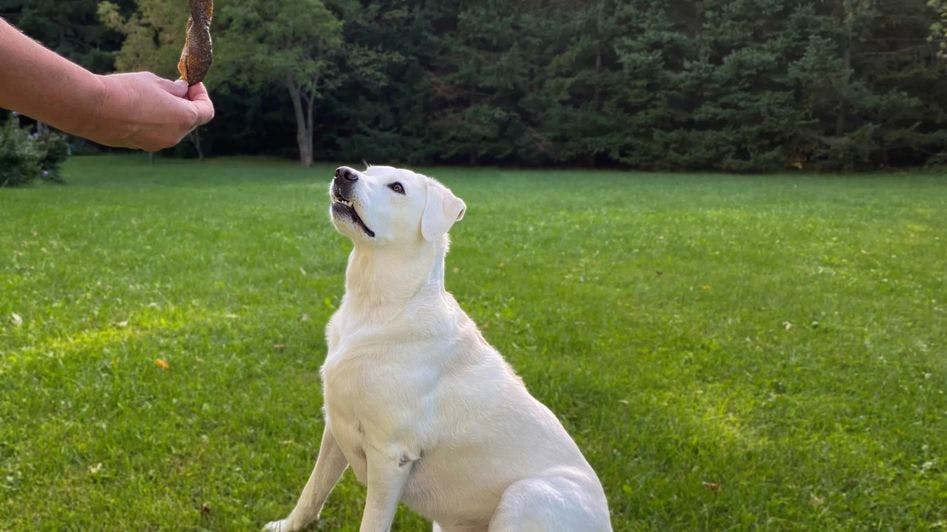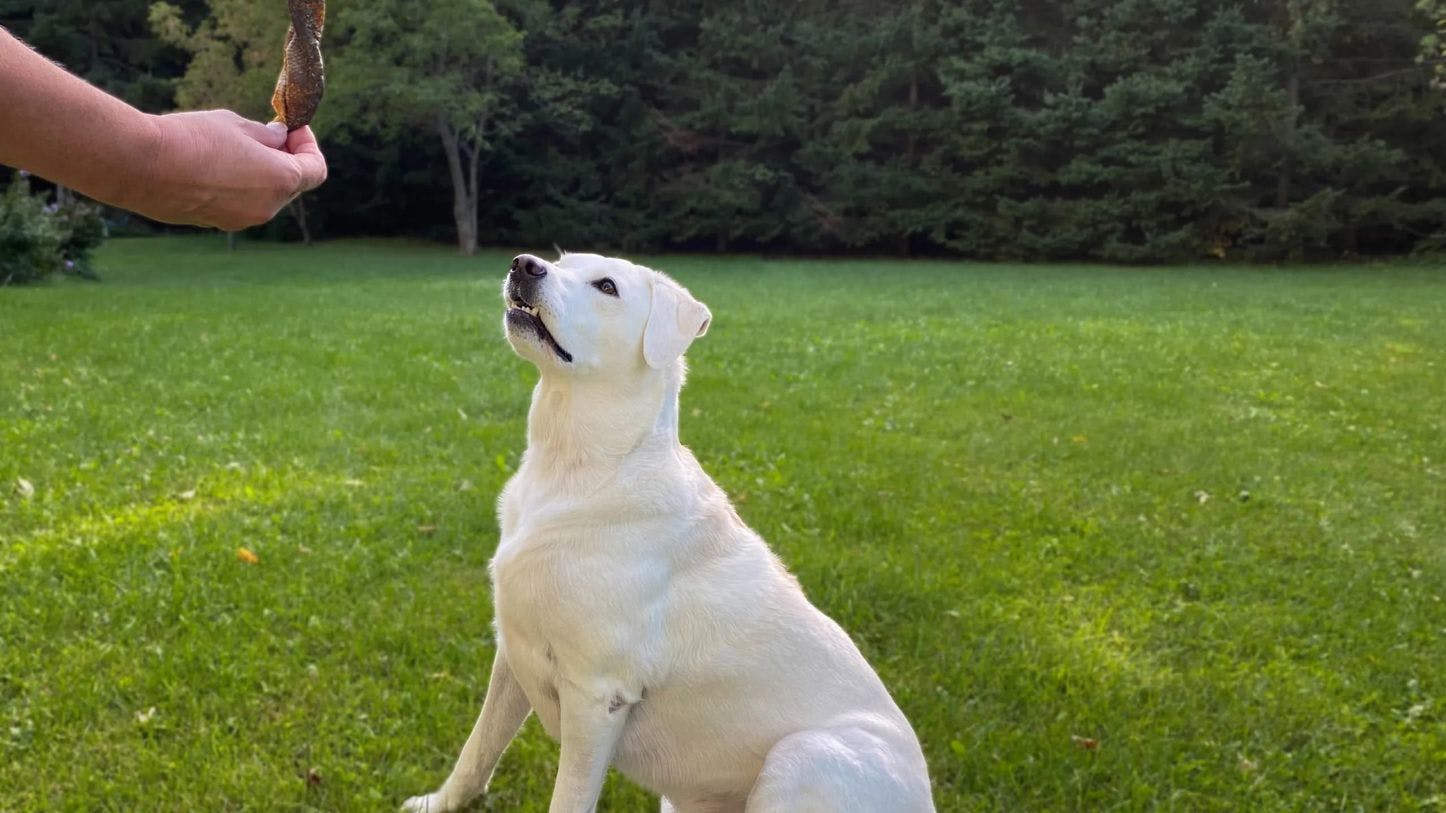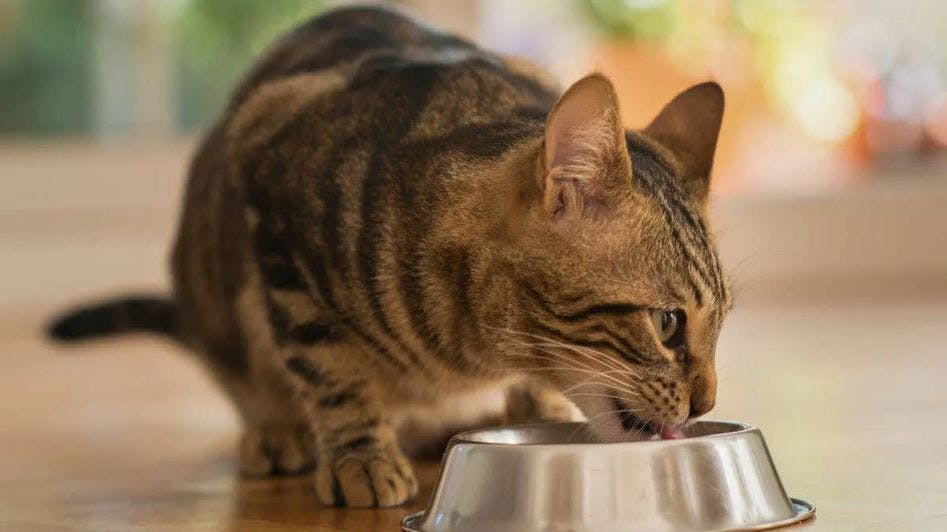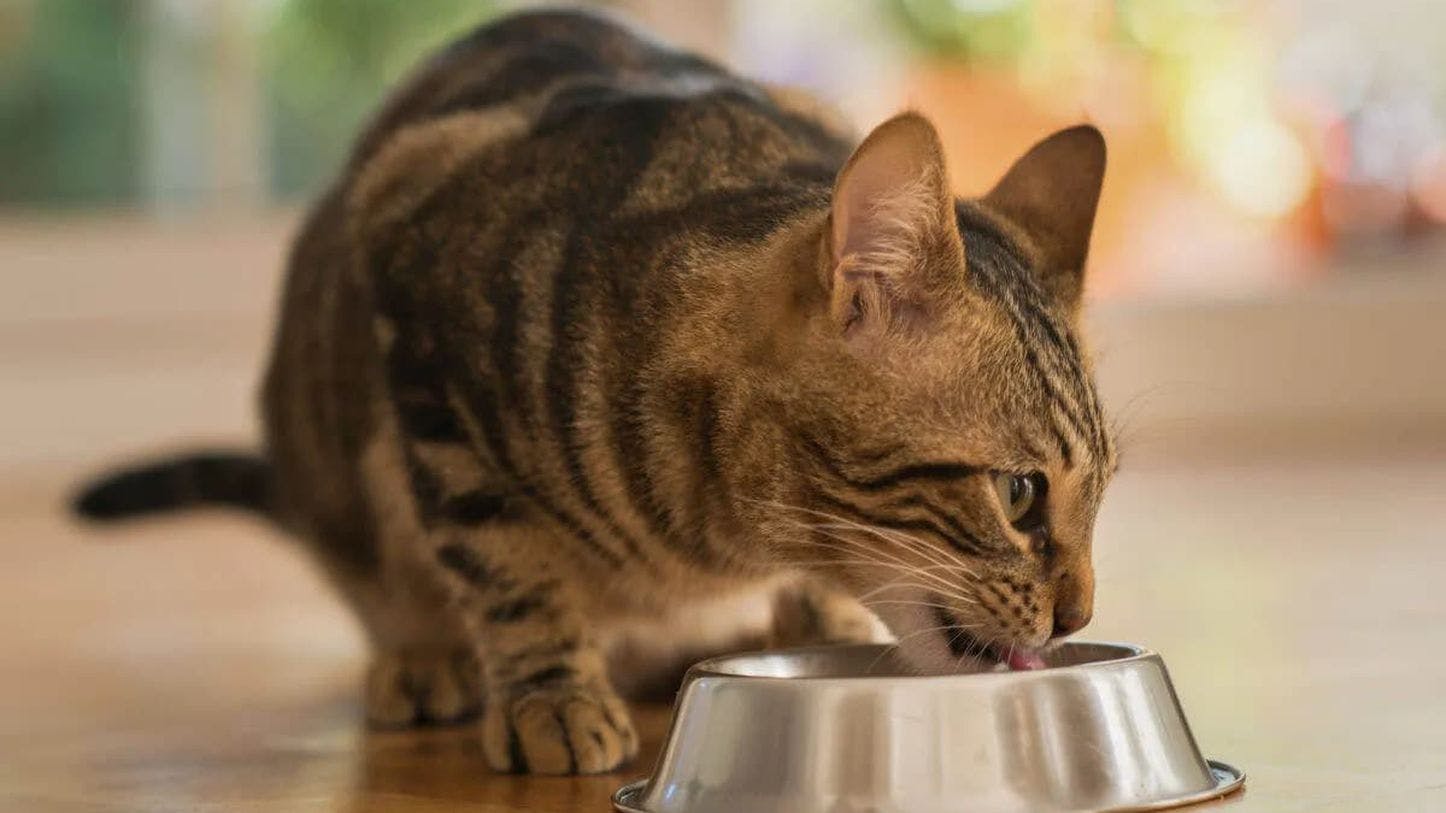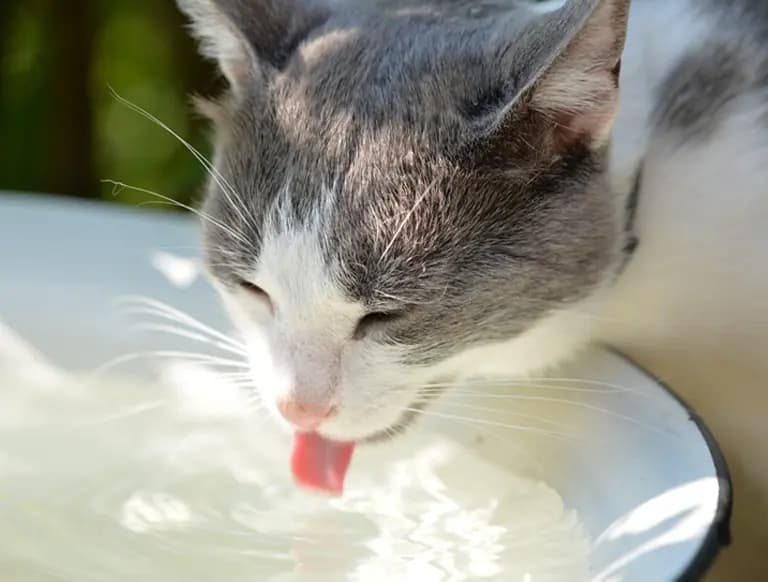
A Guide to Preventing Dehydration in Cats and Ensuring They Stay Hydrated
3.9.2020
A Guide to Preventing Dehydration in Cats and Ensuring They Stay Hydrated
Cats don’t always feel the need to drink as much as they should, so if they aren’t consuming enough water from their food, dehydration can come into play. This is especially true if your cat’s entire diet is based on dry, baked kibble. According to True Care Veterinary Hospital:
Studies show that many cats exist in a state of chronic dehydration. This can affect their health in a variety of ways, including increased risk of developing diabetes and kidney and liver failure.
As cat parents, we want to do all we can to keep cats healthy and well, and minimize their chances of disease. Yet cats can be surprisingly stoic animals. They can be overdramatic about little things — like seeing the bottom of the food bowl — yet simply soldier on through illness or injury.
How do you even know if your cat is dehydrated?
We’ve consulted with a veterinarian and expert animal nutritionist Dr. Richard Patton to bring you all you need to know about recognizing the signs of dehydration in cats, what to do if you see them, and how to prevent Whiskers from becoming dehydrated in the first place.
Causes of Dehydration in Cats
There are several potential reasons for dehydration in cats. Common causes of parched cats include:
Diet: If your cat eats only dry kibble, that’s contrary to the moisture-rich diet their bodies evolved for. Since cats may not feel the “urge” to drink water as often as they should when eating a completely dry diet, it’s easy for a cat who never eats wet food to be chronically dehydrated (which may result in health consequences over time, such as crystals or UTIs).
Environment: The hotter and drier it is outside, the thirstier your cat will be. Consider both the outside environment and the inside conditions of your home. A roasting summer day is the most common cause of acute dehydration.
Activity: Cats that are more active will require more water. Dr. Patton says this is particularly an issue in kittens, who love to frolic and play (and may be too distracted to realize how thirsty they are!).
Autonomy: Though many cats are given the run of their homes, some cats are limited in their movement during certain parts of the day. Perhaps you shut the door while they sleep with you in bed. While that’s a prime opportunity for cuddling, it also prevents your cat from getting to their water dish at night.
This may also be a factor if you lock your cat in a room that gets a lot of sun during the day while you’re at work, limiting your kitty’s ability to seek out a cool corner of the house.
Biology: ‘Flat-faced’ (i.e., brachycephalic) cats, like Persians, are especially prone to dehydration. Cats that are larger, fluffier, or overweight can overheat and dehydrate quickly.
Competition: If you have clean water always available, you may assume your cats are drinking it. But water is a valuable resource, and some cats are more territorial than others. If you have multiple cats, they might bully or intimidate each other away from the water dish.
The easiest way to ensure no one is forced to go thirsty is to have multiple water sources throughout the house. It also helps to engage in active play with your more cautious cats to boost their confidence.
Outside of these factors, there are also some health issues that can cause dehydration in cats. In particular, digestive issues that trigger vomiting or diarrhea leave your cat vulnerable to dehydration.
Pay attention if your cat suddenly seems thirstier than normal. If you notice your cat constantly drinking large amounts of water and making frequent trips to the litter box, that could be a sign of kidney disease or diabetes.
Symptoms and Signs of Dehydration in Cats
According to Dr. Patton, the best way to tell whether your cat is dehydrated is to (gently) pinch their skin into a small fold and release it. If their skin stays pinched, they are likely dehydrated, as decreased skin elasticity is a common sign of dehydration. If their skin quickly becomes smooth again, they are likely just fine.
Other common cat dehydration symptoms include:
Lethargy or loss of energy
Dry, tacky gums
Sunken eyes
Refusal to eat
Panting
If you notice any of these other symptoms in your cat, it’s a good idea to get in touch with your vet for professional diagnosis and treatment.
Dehydration in Cats Home Treatment
So, what do you do if you realize your cat is dehydrated? Consulting your veterinarian should always be your first step, especially if your cat displays serious symptoms such as disorientation or difficulty breathing.
If you realize your cat hasn’t had access to water for a long time and is now extremely thirsty, immediately fill them with a bowl of clean, room-temperature water. Cats prefer to drink from a full bowl and generally prefer metal or ceramic over plastic.
Even if your cat is extremely thirsty, it’s crucial that you do not let them gulp down huge amounts of water right away. Drinking too much, too quickly, after being dehydrated can make your cat sick.
Instead, let Whiskers drink for about thirty seconds, then pick up the bowl. About ten minutes later, offer them water again for another thirty seconds. The key is to rehydrate your kitty slowly over time.
If your cat does have access to water, but you realize they are dehydrated anyway, try to get your kitty to consume moisture any way you can. Sometimes a few drops of chicken broth in your cat’s water can entice them to drink. (Don’t let broth-water sit too long, however, or bacteria will grow).
Another strategy is to give your kitty an ice cube or a frozen “popsicle” made from chicken broth or tuna juice. Your cat’s natural curiosity may tempt them to give the frozen treat at least a few licks. They may even be intrigued enough to eat the whole thing — but again, rehydrate your cat slowly.
How long it takes your cat to recover from dehydration depends on how long they were dehydrated and how severely. Chronic, mild dehydration is bad for your kitty’s long-term health, but your cat will recover from the effects quickly once changes are made.
Acute, severe dehydration — such as if your cat is left in a hot room without water all day — may take a few days to fully recover from, and could even require monitoring at the animal hospital. Always consult your veterinarian if you’re unsure.
How to Keep Your Cat Hydrated
Chronic dehydration in cats is more common than you may realize. Thankfully, there are several easy ways to keep your cat hydrated and happy.
Multiple Watering Holes. Keep several fresh water sources in easily accessible spots throughout the house for your cats. Clean and refill all water bowls daily. Don’t just give the bowls a quick rinse; take the time to wash them with a gentle soap.
Consider Flowing Water. Your kitty’s wild ancestors understood that stagnant water breeds bacteria and flowing water is more likely to be clean. Our furry companions have retained this instinct. Many cats are encouraged to drink and stay hydrated if you offer flowing water instead of a stationary bowl.
Divorce the Food and Water Bowls. Similarly, your cat’s ancestors instinctively knew to keep their kills away from their water source, reducing the risk of contamination.
While it may make sense to us to keep your cat’s food bowl and water bowl next to each other, this may make your kitty skeptical of drinking. Keeping your cat’s water away from their food (and litter box) keeps water bowls cleaner, too.
Avoid Whisker Stress. Your kitty’s whiskers aren’t just for cuteness — they’re there to help your cat sense their environment. Because whiskers are so sensitive, many cats dislike being forced to smoosh their whiskers against the edges of a small bowl. This may be the reason your cat avoids water.
Using a shallow, wide water bowl is generally better than a deep, narrow bowl. (The same goes for your cat’s food bowl as well — many cats even prefer a plate.)
Ice Cubes Make Water Fun. Finally, one unusual method to coax your cat to interact with its water is to make it more visually appealing and interactive. An ice cube or two bobbing in the water invites your cat to come over and bat at it. They may then decide to take a few sips while they are there!
A Hydrating Diet: The Best Way to Prevent Dehydration in Cats
“Vital Essentials’ products are as close to the cat’s natural diet as anybody makes. Nature knows what it’s doing…I tend to think well of an approach to the cat’s diet that duplicates their natural raw diet,” states Dr. Patton.
When it comes down to it, no flowing fountain or perfect water bowl placement can top the most natural way to prevent dehydration in cats: a moisture-rich diet.
Your cat’s desert-dwelling ancestors gained most of their daily water intake through their diet. At Vital Essentials, we believe in replicating your pet carnivore’s raw, natural diet as closely as possible. That includes several methods to offer your kitties a moisture-rich meal.
Freeze Dried Mini Patties, lightweight patties that are conveniently portioned and are a complete and balanced diet. Simply crumble the patties into your kitty’s food bowl and add water to create a moist pâté that contains abundant protein and no unnecessary fillers or artificial ingredients.
If your cat predominantly eats kibble, one of the simplest ways to add moisture to your cat’s diet is with Freeze-Dried Mini Patties Cat Food. Mini Patties that become moist when crumbled and mixed with water or broth, similar to a canned or wet food. This can be mixed into your kitty’s kibble, adding hydration and a boost of protein.
Vital Essentials Freeze Dried Mini Patties Cat Food come in a variety of protein your to satisfy your cat's preferences. Choose from lean proteins like Chicken, Turkey and Duck, to more “exotic” options like Pork or Rabbit, or even to a mixture of red and white meats with dual protein Beef & Chicken.
Finally, for healthy raw food with hydration built-in, Vital Essentials Frozen Patties are an excellent choice. Because these patties are frozen at the peak of freshness, all the moisture that would be in a wild cat’s natural diet is retained. As the frozen patty thaws, don’t be surprised if you see real, red blood pooling in the bowl — that’s how fresh this meat is!
For more information on Vital Essentials and our full product line, follow us on TikTok and Instagram. And if you have any questions, be sure to check out our FAQ page for answers. Together, we can ensure your pet gets the proper nutrition they deserve.
